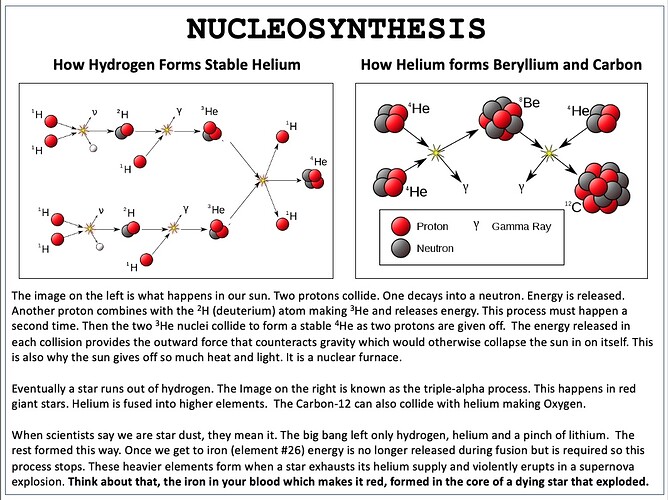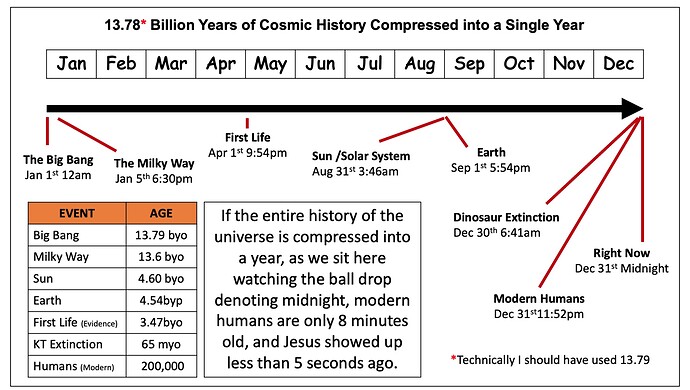I wanted to write up something on the common argument that the universe looks inhospitable to life…too big…too old…let me know your thoughts. This is an abridgment:
S. Hawkin wrote:
“We have developed from the geocentric cosmologies of Ptolemy and his forebears, through the heliocentric cosmology of Copernicus and Galileo, to the modern picture in which the earth is a medium-sized planet orbiting around an average star in the outer suburbs of an ordinary spiral galaxy, which is itself one of about a million million galaxies in the observable universe. Yet the strong anthropic principle would claim that this whole vast construction exists simply for our sake. This is very hard to believe. Our Solar System is certainly a prerequisite for our existence, and one might extend this the whole of our galaxy to allow for an earlier generation of stars that created the heavier elements. But there does not seem to be any need for all those other galaxies, nor for the universe to be so uniform and similar in every direction on the large scale.” [pg 130]
Carl Sagan wrote:
“One of science’s alleged crimes is revealing that our favorite, most reassuring stories about our place in the universe and how we came to be are delusional. Instead, what science reveals is a universe much older and much vaster than the tidy, anthropocentric proscenium of our ancestors. We have found from modern astronomy that we live on a tiny hunk of rock and metal third from the sun, that circles a humdrum star in the obscure outskirts of an ordinary galaxy, which contains some four hundred billion other stars, which is one of about a hundred billion other galaxies that make up the universe, and according to some current views, a universe that is one among an immense number, perhaps an infinite number, of other universes. In this perspective the idea that our planet is at the center of the universe, much less that human purpose is central to the existence of the universe, is pathetic.”
To Address the Question now:
[1] The existence of life depends on the amount of stuff or mass in our universe. If there was too much stuff the universe would have collapsed back on itself after the big bang. This leads to no life. If there was too little stuff or mass then the expansion would have been so great gravity would not have been able to coalesce matter into stars and galaxies. Again, this leads to no life. NASA’s WMAP page:
Our universe seems to have Goldilocks properties: not too much and not too little – just enough mass and energy to support the development of life.
As it turns out, the estimated 200,000,000,000,000,000,000,000 stars in our universe are not too many or too little. They are just right.
[2] The age of our universe is also just right. If the universe’s history was compressed into a single year, Jesus may have only arrived 5 seconds ago, but that was exactly when he needed to. The big bang did not produce any heavy elements. We were left with primordial hydrogen, helium and lithium. Elements like carbon and oxygen needed time to form and they did so in stars through nucleosynthesis (see the image below). Higher elements on the periodic table were formed in the cores of stars that exploded in a supernova eruption once their fuel was exhausted. Our sun is thought to be a third-generation star. Granted the elements in our universe–those elements absolutely necessary for life-- needed to go through several star cycles in order to be produced, our universe could not be much younger than it is right now to sustain us. We needed a third generation star and time for advanced life and the environment suitable for it to develop.
[3] The size of our universe is related to the amount of stuff (mass) in our universe and also how long it has been expanding for. As we saw in the previous two examples, both of these are just right for the development of advanced life. The truth is the universe could not be any smaller and support advanced life. Astrophysicist Michale G. Strauss said: “Since this is the youngest universe to support life like us, it is also the smallest universe that can support life like us.” He also sums things up with a poignant rocket analogy:
Sometimes critics of the Christian God will argue that since they wouldn’t do something in a certain way then God wouldn’t do it that way either, and so God must not exist. In the case of the universe they argue it would be ridiculous to create such a vast universe with very few places in the universe that are hospitable to life. But the critics are missing some important points. First, though vast, the universe is the smallest it can be to do the job of hosting a life-supporting planet as discussed above. Second, if the goal of the creator is to make a home for humans who do have significance, the infrastructure for that home must be adequate. The critics don’t see the overall picture of the purpose of the universe. Let me give you an example. When I was growing up I was fascinated by the space program which had the goal of sending humans to the moon and bringing them back to earth safely. To make such a mission possible, the most powerful rocket ever made was built: the Saturn V. On top of this rocket that stood 36 stories high was a little tiny command module with barely enough room for three astronauts to sit in. Out of the entire rocket only a tiny fraction of the infrastructure was hospitable to life in space. So I guess the rest of the Saturn V was a colossal waste of space and indicates the lack of any real designer. The size and scope of the Saturn V was exactly what was required to send humans to the moon just as the size and scope of our universe is exactly what is required for us to live. Both the universe and the Saturn V are exquisitely designed to support life in only a tiny region of its entirety. But there is no wasted space. We live in a small big universe.


